Electronic components are the building blocks of modern technology, from the smallest handheld devices to the most sophisticated industrial machinery.
Understanding how to identify these components is essential for anyone involved in electronics repair, maintenance, or hobbyist projects.
In this guide, we will delve into the methods and techniques for accurately identifying electronic components.
What Are Electronic Components?
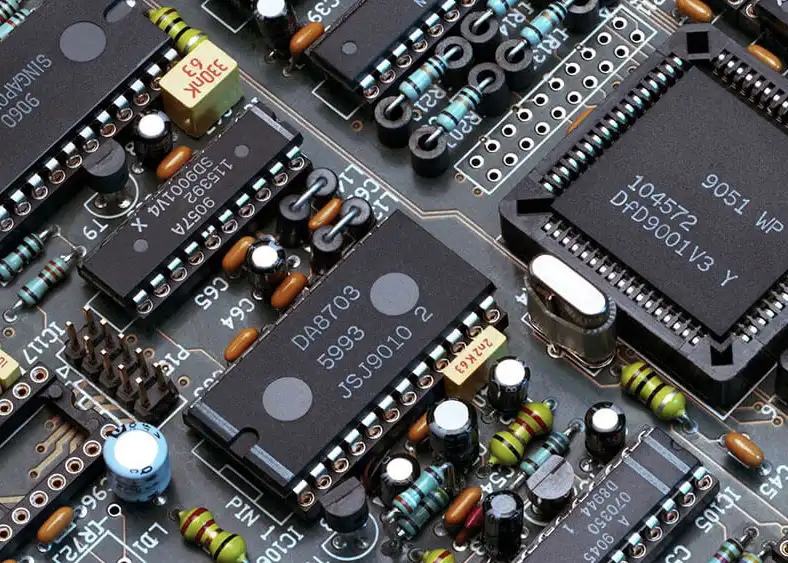
Electronic components are the basic building blocks of electronic circuits, serving specific functions to facilitate the flow and control of electrical currents. These components are used in a wide range of electronic devices, from simple household appliances to complex computer systems and industrial machinery.
At their core, electronic components manipulate and regulate electrical signals to perform various tasks within a circuit. They can be broadly classified into two categories: passive components and active components.
Importance of Identifying Electronic Components
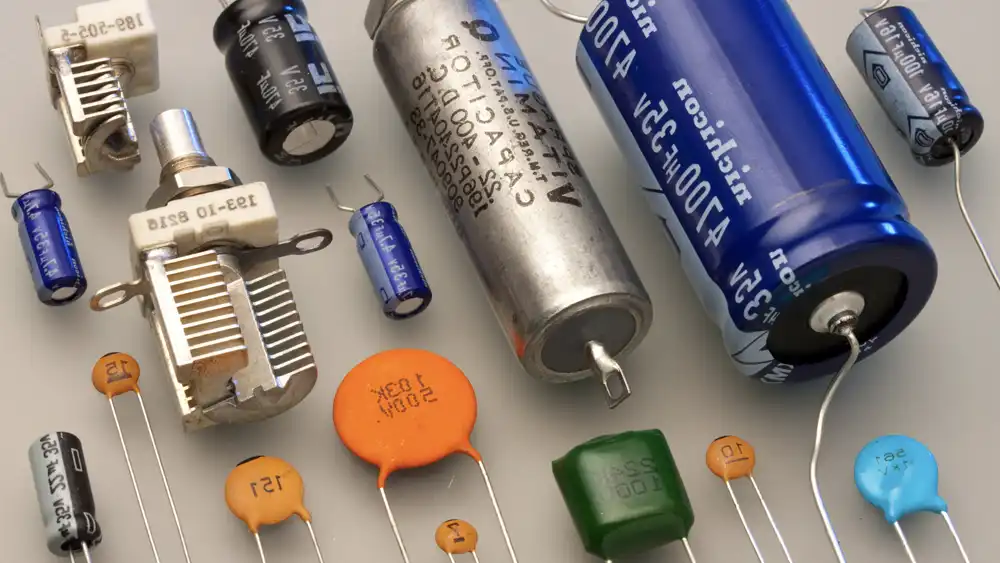
Accurately identifying electronic components is essential for various reasons, ranging from troubleshooting faulty circuits to ensuring compatibility and optimizing circuit performance. Here are some key reasons why component identification is crucial:
Troubleshooting and Repair:
When electronic devices malfunction, identifying faulty components is the first step in diagnosing and resolving the issue. By pinpointing the defective component, technicians can replace it with a functional one, restoring the device to working condition.
Compatibility:
Different electronic components have unique specifications, including voltage ratings, current capacities, and tolerance levels. Using the wrong component or substituting it with an incompatible one can lead to circuit failures, damage to other components, or even safety hazards. Accurate identification ensures that the right components are used for a particular application, maintaining compatibility and reliability.
Optimizing Circuit Performance:
Electronic circuits often require precise component values and characteristics to operate optimally. By correctly identifying components and selecting ones with the desired specifications, engineers can design circuits that meet performance requirements, such as signal accuracy, frequency response, and power efficiency.
Preventing Damage:
Misidentification of electronic components can result in applying incorrect voltages, currents, or polarities, leading to component damage or failure. For example, connecting a capacitor with reversed polarity or using a resistor with the wrong resistance value can cause overheating, short circuits, or even permanent damage to the circuit or device.
Ensuring Compliance:
In certain industries, such as aerospace, automotive, and medical electronics, strict standards and regulations govern the use of electronic components. Proper identification and documentation of components are essential for ensuring compliance with safety, reliability, and quality requirements.
Facilitating Circuit Design:
When designing new electronic circuits or systems, engineers rely on accurate component specifications to make informed decisions regarding component selection, placement, and integration. Detailed knowledge of component characteristics enables engineers to optimize circuit performance, minimize design risks, and meet project deadlines.
Common Types of Electronic Components

Resistors
Resistors are passive components that limit the flow of electrical current in a circuit. They are characterized by their resistance value, measured in ohms, and tolerance. Identifying resistors involves decoding the color bands printed on their surface, which indicate the resistance value and tolerance.
Capacitors
Capacitors store and release electrical energy in the form of an electric field. They come in various types, including ceramic, electrolytic, and tantalum capacitors. Identifying capacitors requires deciphering the markings or codes imprinted on their bodies, which denote capacitance, voltage rating, and polarity (if applicable).
Inductors
Inductors, also known as coils or chokes, store energy in a magnetic field generated by the flow of current. They are commonly found in power supplies and RF circuits. Identifying inductors involves examining their physical appearance and measuring their inductance using specialized tools.
Diodes
Diodes are semiconductor devices that allow current to flow in one direction while blocking it in the opposite direction. They come in various packages, including axial, radial, and surface-mount types. Identifying diodes requires identifying their package style and verifying their polarity markings.
Transistors
Transistors are semiconductor devices that amplify or switch electronic signals. They are available in different configurations, such as bipolar junction transistors (BJTs) and field-effect transistors (FETs). Identifying transistors involves recognizing their package type, pinout configuration, and part number.
Integrated Circuits (ICs)
Integrated circuits are complex assemblies of electronic components fabricated onto a single semiconductor substrate. They can perform various functions, such as logic operations, signal processing, and voltage regulation. Identifying ICs typically involves reading their part number or manufacturer logo.
How Do You Identify Electronic Components
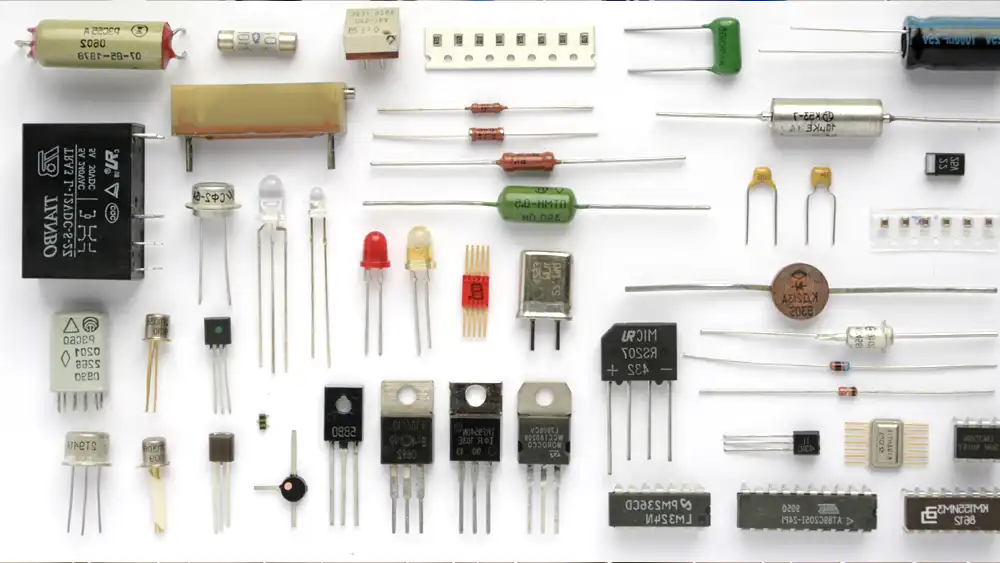
Identifying electronic components involves a combination of visual inspection, measurement, and interpretation of markings or codes. Here’s a step-by-step guide on how to identify different types of electronic components:
- Visual Inspection: Start by visually examining the component to identify its physical characteristics, such as size, shape, color, and markings. Note any unique features or distinguishing attributes that can help in identification.
- Reading Markings or Codes: Many electronic components have markings or codes printed on their bodies, providing valuable information about their specifications. For example:
- Resistors: Check for color bands or numerical codes indicating resistance value and tolerance.
- Capacitors: Look for alphanumeric codes specifying capacitance, voltage rating, and tolerance.
- Diodes: Identify polarity markings or part numbers printed on the diode’s body.
- Transistors: Note the part number, package type, and pinout configuration.
- Integrated Circuits (ICs): Read the part number, manufacturer logo, or other identification markings.
- Using Tools for Measurement: In some cases, direct measurement of component parameters may be necessary for identification. Tools such as a multimeter, LCR meter, or component identifier can provide precise measurements of resistance, capacitance, inductance, and other characteristics.
- Referencing Datasheets: If available, consult datasheets or manufacturer specifications for the component in question. Datasheets contain detailed information about component characteristics, ratings, pinouts, and application notes, aiding in accurate identification and usage.
- Online Resources and Databases: Utilize online resources, databases, or smartphone apps designed for electronic component identification. These tools often provide comprehensive databases of component specifications, cross-references, and identification guides based on part numbers or markings.
- Seeking Expert Advice: When in doubt or unable to identify a component accurately, seek advice from experienced technicians, engineers, or online communities specializing in electronics. Sharing clear images and descriptions of the component can help others assist in identification.
By following these steps and employing a combination of visual inspection, reading markings, using measurement tools, referencing datasheets, and seeking assistance when needed, you can effectively identify electronic components and gain insights into their specifications and functionality. Practice and experience play key roles in mastering the skill of component identification, so don’t hesitate to explore and learn more about different types of electronic components.
Electronic Component Identification Chart
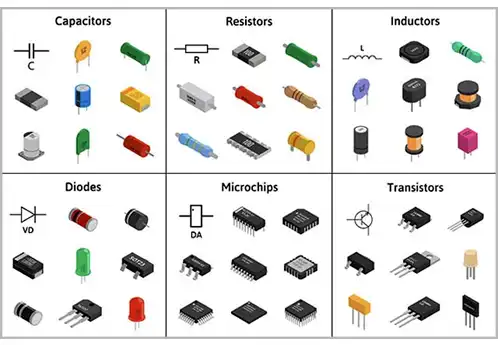
An Electronic Component Identification Chart is a visual reference tool used by engineers, technicians, students, and hobbyists to identify various electronic components based on their physical appearance, markings, and specifications.
This chart typically includes illustrations or photographs of common electronic components along with relevant information to aid in identification.
Here are the key components typically featured in an Electronic Component Identification Chart:
- Resistors: Resistors are depicted with color bands or numerical values indicating their resistance value in ohms (Ω) and tolerance. The chart may also include illustrations of different resistor types, such as through-hole and surface mount, and their respective package sizes.
- Capacitors: Capacitors are represented with symbols or images indicating their capacitance value in farads (F), picofarads (pF), or microfarads (µF), as well as voltage ratings and polarity markings for polarized capacitors. Various capacitor types, including ceramic, electrolytic, and tantalum capacitors, may be included in the chart.
- Inductors: Inductors are illustrated with symbols or images showing their inductance value in henries (H) or millihenries (mH), along with their construction types and package sizes. The chart may also include information on different types of inductors, such as air-core, ferrite-core, and toroidal inductors.
- Diodes: Diodes are depicted with symbols or images indicating their type (e.g., rectifier diode, zener diode, light-emitting diode) and polarity markings. Specifications such as forward voltage drop and maximum reverse voltage may also be provided for each diode type.
- Transistors: Transistors are represented with symbols or images indicating their type (e.g., bipolar junction transistor, field-effect transistor), package style (e.g., TO-92, SOT-23), and pinout configuration. The chart may include information on transistor parameters such as gain (hfe), maximum collector current (IC), and breakdown voltage.
- Integrated Circuits (ICs): ICs are illustrated with symbols or images indicating their package style (e.g., DIP, SOIC, QFN), part number, and functional description. The chart may also include information on IC pinouts, pin functions, and typical applications for each IC type.
- Other Components: Additional electronic components such as voltage regulators, relays, switches, connectors, and sensors may also be included in the chart, along with relevant identification information and specifications.
How to Identify Electronic Components on a Circuit Board
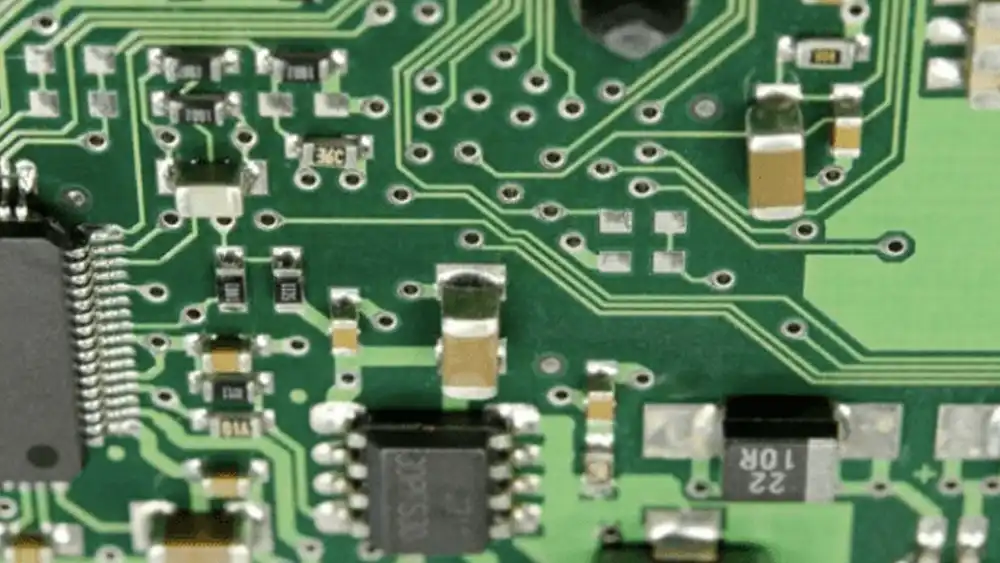
Identifying electronic components on a circuit board can be a challenging yet rewarding task.
Here’s a electronic component identification guide on how to identify components effectively:
- Inspect the Circuit Board: Begin by visually inspecting the circuit board to familiarize yourself with its layout and components. Note the various types of components such as resistors, capacitors, diodes, transistors, integrated circuits (ICs), and connectors.
- Use a Magnifying Glass: Since electronic components on circuit boards can be small and densely packed, using a magnifying glass or a magnification feature on a digital camera can help you examine the components more closely.
- Identify Component Packages: Different electronic components come in various package styles, such as through-hole, surface-mount, or hybrid packages. Learn to recognize these package styles as they can provide clues about the type of component.
- Read Component Markings: Many electronic components have markings or codes printed on them to indicate their specifications. Use a magnifying glass to read these markings carefully. Common markings include:
- Resistors: Color bands or numerical codes indicating resistance value and tolerance.
- Capacitors: Alphanumeric codes specifying capacitance, voltage rating, and tolerance.
- Diodes: Polarity markings or part numbers printed on the diode’s body.
- Transistors: Part numbers, package type, and pinout configuration.
- Integrated Circuits (ICs): Part numbers, manufacturer logos, or other identification markings.
- Refer to Datasheets: If available, refer to datasheets or specifications provided by the component manufacturer. Datasheets contain detailed information about component characteristics, pinouts, and application notes, aiding in accurate identification.
- Trace Circuit Connections: Follow the traces on the circuit board to understand how components are connected within the circuit. This can help you identify components based on their function and position within the circuit.
- Use Component Identification Tools: Utilize component identification tools such as multimeters, LCR meters, or component testers to measure component parameters such as resistance, capacitance, and inductance. These measurements can provide additional clues for component identification.
- Document Your Findings: As you identify each component, document its location on the circuit board and its specifications. This documentation can be valuable for troubleshooting, repairing, or replicating the circuit in the future.
- Seek Expert Advice: If you encounter difficulties in identifying certain components, don’t hesitate to seek advice from experienced technicians, engineers, or online communities specializing in electronics. Sharing clear images and descriptions of the components can help others assist in identification.
Identifying Electronic Components Circuit Symbols and Functions
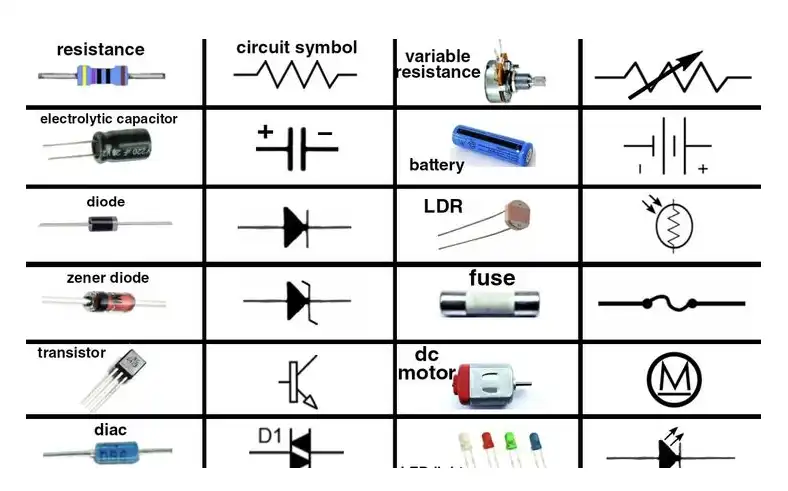
Identifying electronic components circuit symbols, and functions is fundamental for understanding electronic circuits and systems. Each component plays a specific role in controlling the flow of electrical current, storing energy, amplifying signals, or performing logic operations within a circuit. Understanding these components allows engineers, technicians, and hobbyists to design, troubleshoot, and optimize electronic systems effectively.
Circuit symbols represent electronic components in schematic diagrams and circuit designs. These symbols provide a standardized representation of components, making it easier to interpret circuit diagrams and understand the connections between components. Common electronic components and their circuit symbols include resistors, capacitors, inductors, diodes, transistors, and integrated circuits (ICs).
Resistors are passive components that limit the flow of electrical current and are represented by a zigzag line in circuit diagrams. They are used to control voltage levels, divide voltage, and limit current in circuits. Capacitors store and release electrical energy and are represented by two parallel lines with plates between them. Capacitors are used for filtering, coupling, and timing applications in electronic circuits.
Inductors store energy in a magnetic field generated by the flow of current and are represented by a series of loops. They resist changes in current flow and are commonly used in filters, oscillators, and power supply circuits. Diodes are semiconductor devices that allow current to flow in one direction while blocking it in the opposite direction. They are represented by an arrow pointing in the direction of current flow.
Transistors are semiconductor devices that amplify or switch electronic signals and are represented by various symbols depending on their configuration (e.g., bipolar junction transistors or field-effect transistors). They are essential components in amplifiers, oscillators, and digital logic circuits. Integrated circuits (ICs) are complex assemblies of electronic components fabricated onto a single semiconductor substrate. They can perform various functions, such as logic operations, signal processing, and voltage regulation, and are represented by standardized symbols in circuit diagrams.
Tools Required for Identifying Electronic Components
Identifying electronic components accurately often requires the use of specialized tools and equipment. Some essential tools for component identification include:
- Multimeter: A versatile instrument used to measure voltage, current, and resistance in electronic circuits.
- LCR Meter: Specifically designed for measuring inductance, capacitance, and resistance with high accuracy.
- Component Identifier: A handheld device that can automatically identify and test various types of electronic components.
- Magnifying Glass: Helps in examining small and intricate components and markings more closely.
Visual Identification of Electronic Components
Many electronic components feature visual cues that can aid in their identification. For example:
- Reading resistor color codes: The color bands printed on resistors indicate their resistance value and tolerance according to a standardized color code.
- Identifying capacitor markings: Capacitors often have alphanumeric codes or markings that specify their capacitance, voltage rating, and tolerance.
- Recognizing diode types: Diodes can be identified by their package style, such as axial, radial, or surface-mount, as well as polarity markings.
- Differentiating between transistor packages: Transistors come in various package styles, such as TO-92, SOT-23, and DIP, each with its own pinout configuration.
Testing Electronic Components
In addition to visual inspection, testing electronic components is essential for verifying their functionality. Here are some common tests performed on electronic components:
- Testing resistors: Use a multimeter to measure the resistance value of a resistor and verify if it falls within its specified tolerance range.
- Testing capacitors: Check the capacitance and leakage current of capacitors using an LCR meter to ensure proper operation.
- Testing diodes: Use a multimeter in diode test mode to verify the forward and reverse voltage drop across a diode.
- Testing transistors: Test the gain and junction characteristics of transistors using a multimeter or transistor tester.
Advanced Techniques for Electronic Component Identification
In some cases, identifying electronic components may require more advanced techniques:
- Using datasheets: Datasheets provide detailed specifications and application notes for electronic components, helping to identify their characteristics and functionality.
- Reverse engineering circuits: Analyzing the circuit layout and connections can provide insights into the function and role of individual components within a circuit.
How Will You Identify an Electronic Component for Replacement
Identifying an electronic component for replacement requires careful examination and consideration of several factors to ensure compatibility and functionality within the circuit.
Here’s a detailed guide on how to identify an electronic component for replacement:
- Visual Inspection: Begin by visually inspecting the component to be replaced. Note its physical characteristics, including size, shape, color, and markings. These visual cues can provide valuable information about the type and specifications of the component.
- Read Markings or Codes: Many electronic components have markings or codes printed on them, indicating their specifications. Use a magnifying glass if necessary to read these markings carefully. Common markings include part numbers, manufacturer logos, and alphanumeric codes specifying parameters such as resistance, capacitance, voltage rating, and tolerance.
- Compare Specifications: Once you have identified the markings or codes, compare them to the specifications of the original component. Refer to datasheets, manufacturer specifications, or online resources to ensure that the replacement component matches the required specifications, including electrical parameters, package type, and pinout configuration.
- Consider Electrical Compatibility: Ensure that the replacement component is electrically compatible with the circuit in which it will be used. Check parameters such as voltage rating, current capacity, and tolerance to ensure that the replacement component can safely handle the operating conditions of the circuit.
- Verify Package Type: Pay attention to the package type of the replacement component, especially if it is a surface-mount component. Ensure that the physical dimensions and mounting configuration of the replacement component match those of the original component to ensure proper fit and installation.
- Check Polarization and Orientation: For components such as diodes, capacitors, and transistors, verify the polarity or orientation of the replacement component. Ensure that the replacement component is installed correctly according to the polarity markings or pinout configuration to prevent damage to the circuit.
- Test Compatibility: If possible, test the compatibility of the replacement component before installation. Use a multimeter or other testing equipment to verify that the replacement component meets the required specifications and functions correctly within the circuit.
- Document Replacement: After identifying and verifying the replacement component, document its specifications, including part number, manufacturer, and electrical parameters. Keep records of component replacements for future reference and troubleshooting purposes.
By following these steps and ensuring careful consideration of specifications, compatibility, and installation requirements, you can effectively identify and replace electronic components in a circuit. Remember to exercise caution and attention to detail to ensure the proper functioning and reliability of the circuit after replacement.
Conclusion
Identifying electronic components is an essential skill for anyone working with electronics, whether professionally or as a hobbyist. By understanding the characteristics, markings, and testing methods for different types of components, technicians can troubleshoot, repair, and build electronic circuits with confidence.